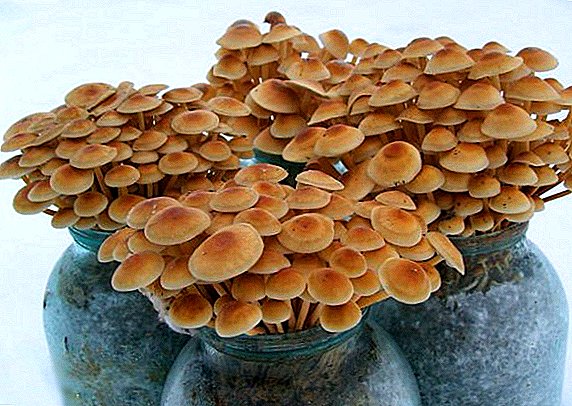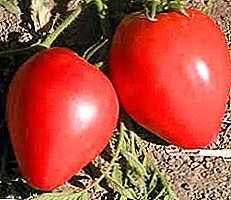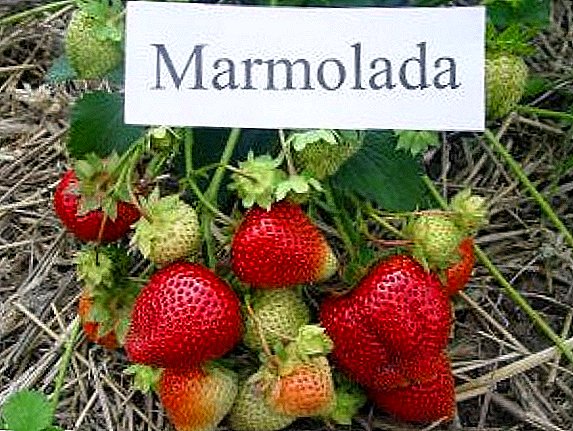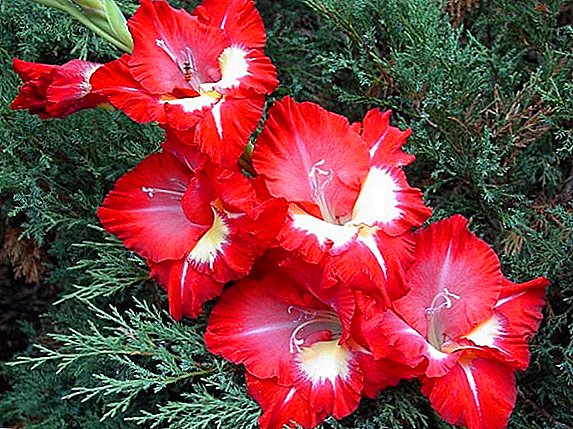 Gladiolus is one of the most beautiful flowers and is one of the top 5 plants most often used for cutting. It is a genus of bulbous plants belonging to the iris family. It has approximately 200 species and over 5 thousand varieties. A native flower from Africa, the Mediterranean, Central Europe and Asia. How to plant gladiolus in the spring in our latitudes, we will describe in detail below.
Gladiolus is one of the most beautiful flowers and is one of the top 5 plants most often used for cutting. It is a genus of bulbous plants belonging to the iris family. It has approximately 200 species and over 5 thousand varieties. A native flower from Africa, the Mediterranean, Central Europe and Asia. How to plant gladiolus in the spring in our latitudes, we will describe in detail below.
Choice of corms
Despite the fact that gladioli can be planted in three ways: seeds, tubers and tubers, it is the latter method that is most convenient. Successful planting of flowers depends on the correct choice of tubers.
Dahlias, irises, crocus, autumn crocus, liatris, yucca, selaginella, hibiscus garden, as well as gladioli, are bulbotonic plants that are exceptionally decorative.

To begin, each bulb must be carefully examined and weed out the damaged, sick, rotten, with mold, with suspicious spots. Pay attention to the size of the bulb and its bottom. If it is too small, it means that the tuber has not yet ripened.
The bulb must be at least 5-7 cm in size. The larger it is, the better.
Did you know? His name gladiolus received from the Latin word gladius, which translates as a sword. Probably, this is how the flower was named, since it has leaves that resemble a sword. In the people it is also called the spike.
The best time for planting in open ground
The best time for planting gladioli in the spring in open ground will be the period from late April to early May. The main thing is that the soil warms up 8-10 cm deep down to at least +8 ° C. This recommendation should be observed, since the planting of the bulbs at a lower temperature will lead to the fact that the development of the root system will take place slowly, and it will not be able to provide normal nutrition to the ground part of the plant. 
Do I need to germinate bulbs and how to do it
Germinating bulbs before planting - a desirable procedure, but not mandatory. Germinated tubers are characterized by rapid growth and better flowering.
The time of sprouting corms depends on the climate that prevails in the zone where they are planted. So, in the middle lane it can be done from the beginning of March.
The bulbs are placed in a warm place where sunlight does not penetrate.
Two days before planting, the tubers need to be decomposed on a damp napkin for germination. This will allow bulbs to be placed in the ground, which already have small roots. 
How to land gladioli
At this point, we want to share with you how to plant gladioli in the spring, familiarizing you with the rules, recommendations and tips.
In addition to preparing the bulbs and observing the recommended time for planting, important factors that must be considered before planting gladioli are:
- the choice of location in accordance with the preferences of the plant for lighting;
- soil preparation for planting.
Since gladiolus comes from hot Africa and the warm Mediterranean, they light and heat-loving. Therefore, looking for a place to plant, you need to choose a well-lit area, which does not fall the shadow of trees and other tall cultures.
Astra, buzulnik, veronika, gaillardia, coreopsis, delphinium, yarrow, carnation, awl-shaped phlox, spruce and thyme, as well as gladiolus, are light-loving plants, as their leaves have less chlorophyll.

Important! In gladioli, planted in the shade or partial shade, there may be a lack of flowering. This is especially true of late varieties.If possible, the bed should be oriented in the direction from east to west. In addition, the landing site must be securely covered from drafts and be on an elevation, since the plant will not grow when the groundwater is close to it.
The soil flowers love fertile. Sandy or loamy light soil would be ideal for planting. In the absence of such, it will need to be prepared in advance. In heavy soils with a large admixture of clay or peat flowers will not grow. They will also refuse to live in acidic soil, since they prefer a weakly acidic reaction, which is close to neutral (pH = 6.5-6.8). To reduce the acidity, you need to add lime, egg shells or dolomite flour under the digging into the ground. It will be enough 150-200 g per square meter. 
If the soil contains an excessive amount of clay, then it should be diluted with sand, and when digging in the autumn, add lime and humus. Fresh humus can be made, but undesirable because it can provoke excessive foliage growth and poor flowering. Clay with humus and rotted compost is added to the sandy soil.
In the spring, before planting flowers, the soil should be fed with the necessary elements for normal growth and development of the plant: phosphorus, nitrogen and potassium. It adds:
- ammonium nitrate (15 g / 1 sq. m);
- superphosphate (15 g / 1 sq. m);
- potassium sulphate (30 g / 1 sq. m.).
Important! It is not recommended to place gladioli for three years in a row at the same place. This will increase the risk of developing diseases in the plant. After two years, the place should be changed. You also do not need to plant flowers on a plot where asters, phloxes, and root crops, which have common fungal diseases with gladiolus, have previously grown.

It is necessary to make holes in the ground. Their size will depend on the size of the bulbs. The pits should be equal to the four diameters of the planting material. So, the largest bulbs will need to be deepened by about 10-15 cm, small ones - by 8-10.
Tubers do not need to be deepened too much, because in this case they will bloom later and give fewer babies. If you plant them not too deeply, then tying up the arrows will be added to the care activities. Also shallow bulbs are more likely to undergo disease.
The gaps between the holes are also made depending on the size of the tubers. The larger they are, the gaps should be longer. However, in any case, the wells do not need to be located closer than 10 cm apart. The row spacing should be 20-25 cm.
Gladiolus can be planted in another way - in a solid ditch. In the deepening of the bulbs are also decomposed depending on the diameter and at a distance of 10-20 cm from each other. 
Before planting material placed in the hole, the ground should be well watered. It is also desirable to treat the drug "Fitosporin". Lay drainage at the bottom: river sand or sphagnum moss, 2 cm layer.
Tubers need to be cleaned of integumentary scales. If there are slightly rotted places, they should be cut with a sharp knife.
Also, the bulbs can be put in garlic solution for two hours. It is prepared from five to six pieces of teeth, which are filled with hot water. To disinfect the bulbs immediately before planting process with a solution of potassium permanganate. It is prepared from 0.5 g of potassium permanganate dissolved in a liter of warm water. The bulbs hold it for 30 minutes.
Those who prefer to work with chemical agents, planting material before planting can be processed in a solution of the drug "Karbofos." 
After the tubers are placed in the wells or ditch, they are sprinkled with loose earth. You also need to mulch the planting with peat. Mulching will save the necessary moisture in the ground. Until the moment when shoots appear, gladioli should not be watered. Sprouts should appear after two or three weeks.
Did you know? Gladiolus was not always used for decorative purposes only. So, 300 years ago, his onions were crushed, flour was added to them and pellets were made. Since the XVII century, it is known about the healing properties of the flower - ground corms were used against toothache, as a diuretic, as a means to strengthen the immune system. But as an ornamental plant, gladiolus began to be planted only from the XIX century.Gladiolus - unpretentious plants. Their planting and care can even beginner growers. It is important to follow the recommendations on how to choose the right place and soil for planting, cull corms and when planting gladiolus in open ground in spring. And then these flowers will decorate any dacha and will please their owner with beautiful long flowering. They look great in group plantings near pavilions, near the porch, along the tracks and in mixborders.












